1lumen selects and reviews products personally. We may earn affiliate commissions through our links, which help support our testing.
Fenix TK35UE v2.0 review
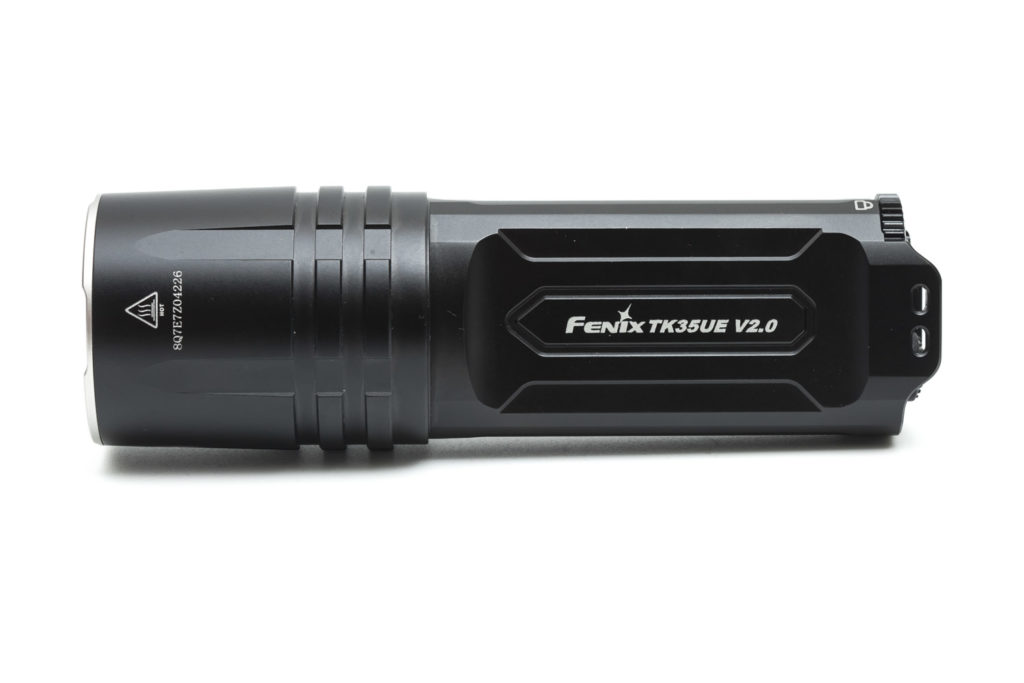
Fenix TK35UE v2.0 specifications
| Brand/model | Fenix TK35UE v2.0 |
|---|---|
| LED | 3*Luminus SST40 |
| Lumens | 5,000 lm |
| Beam intensity | 40,000 cd |
| Battery config. | 2*18650 |
| Material | Aluminum |
| Modes | 5 |
| Blinkies | Strobe |
| Reflector | Smooth |
| Waterproof | IP68 |
| Review date | November 2021 |
Introduction:
You’re saying this looks familiar? Well, I guess you’re right. The Fenix TK35UE v2 stands in a long tradition. The first TK35 was released in 2011, exactly 10 years ago. But what has changed?
Well, first of all, there have been multiple versions in between, so it’s not like a 10-year old flashlight got a new upgrade. It started out as an 820-lumen tactical flashlight with a single CREE XML LED, and this latest version has an output 6 times higher. It’s claiming to have an output of a maximum of 5000 lumens with 3 LEDs. That’s a nice upgrade for sure. And besides this increase in output, a few more changes have been made. They got rid of the battery carrier, changed the UI, and it got a better holster.
But there’s been another Fenix light we reviewed earlier, that looks rather similar, and is called the Fenix LR35R. The biggest differences between the LR35R and this TK35UE v2 are the use of 2*21700 vs 2*18650 and the side switch on the LR35R. The TK35UE v2.0 is a tactical flashlight with 2 switches in the rear and no side switch.
Package quality.
The TK35UE v2 arrived in a typical Fenix-style package with a couple of accessories. Here’s what you can expect:
- The flashlight: Fenix TK35UE v2.0
- Holster
- Lanyard
- O-ring
- Warranty card
- Manual
There’s no batteries, nor a charger included. You have to get those separately.
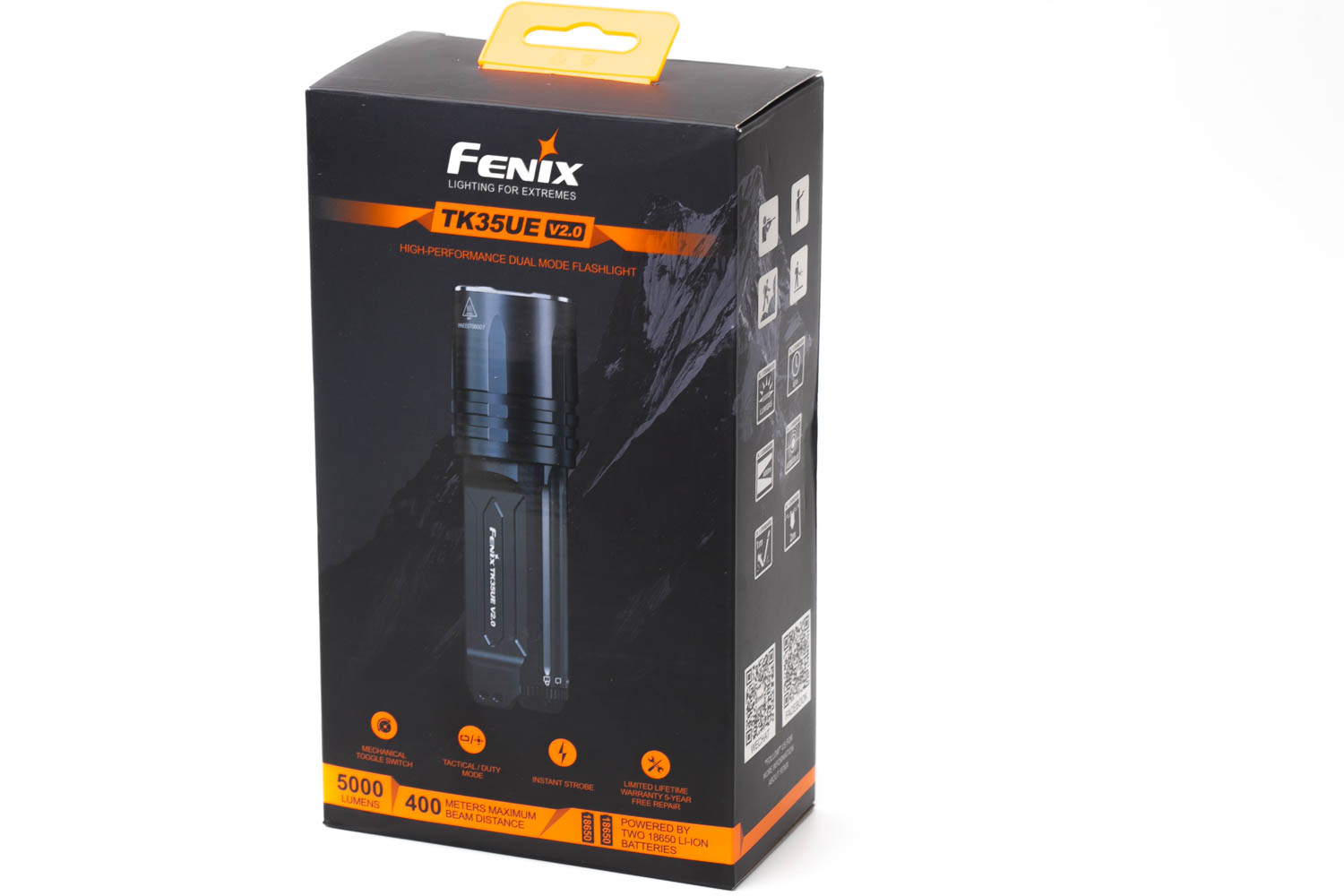
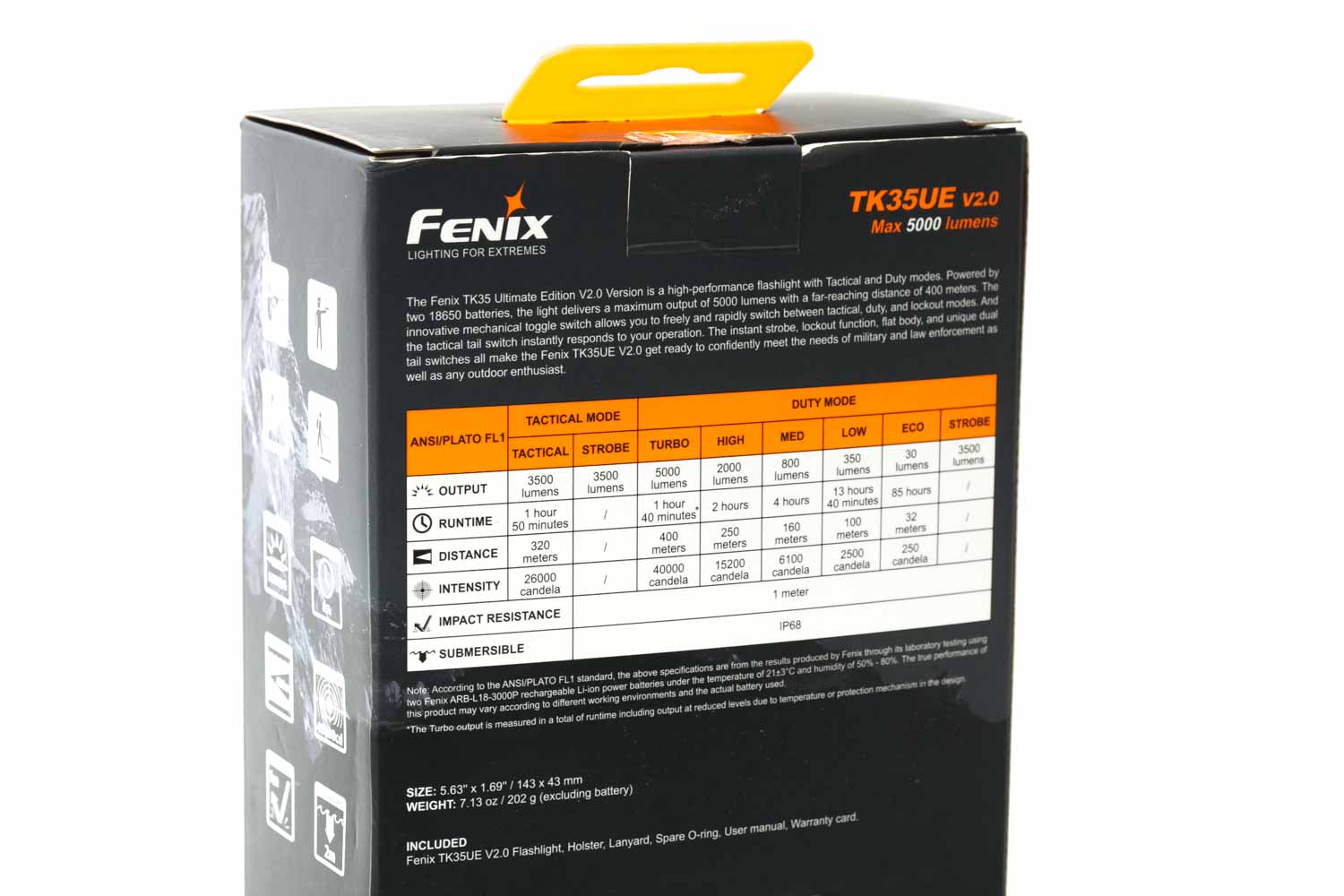
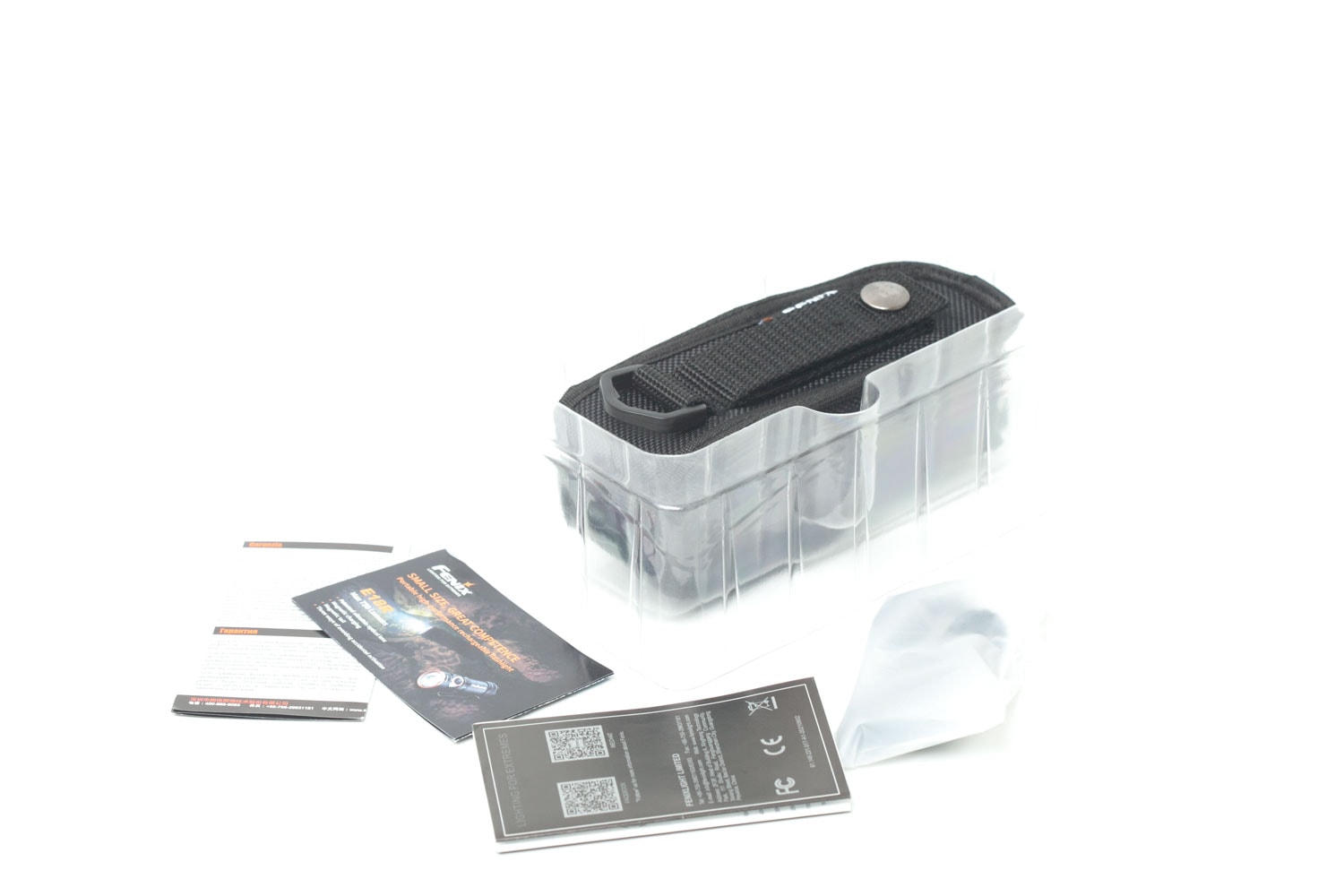
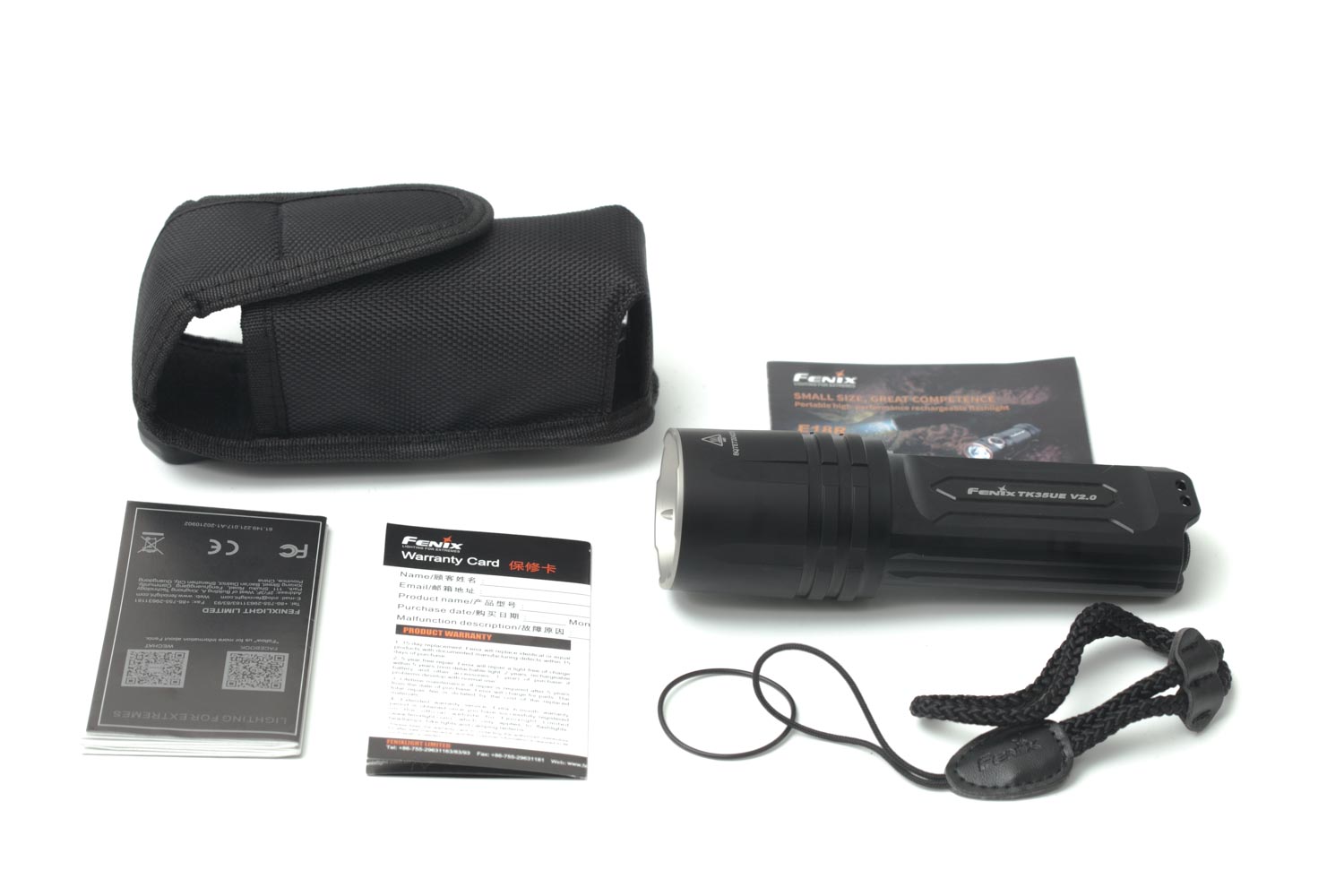
Flashlight in use
There aren’t that many dual-cell tactical lights that run on 2*18650 batteries in parallel but the Fenix TK35 series is well known for this.
I know it looks a little odd-shaped, but the benefit of having 2 batteries parallel is the extended capacity and runtime. There’s only 2 switches (actually 3) at the rear and none on the side, so it’s best to carry it overhand with your thumb on the main switch. The main switch is used for power, and the smaller, secondary switch, is used for mode changing and instant strobe (with long-press). The main stitch is a forward clicky, and it won’t do anything else than switching between On and Off.
Because of the way it is built, the body of the flashlight fits actually very nicely in my hand. This is because of the 2 18650 sitting next to each other, in parallel. That makes the position of your hand feel naturally relaxed.
It doesn’t have any knurling so keep that in mind before ordering. It could feel a little bit slippery, although the pocket clip provides some extra grip. Fenix includes a lanyard, just in case.
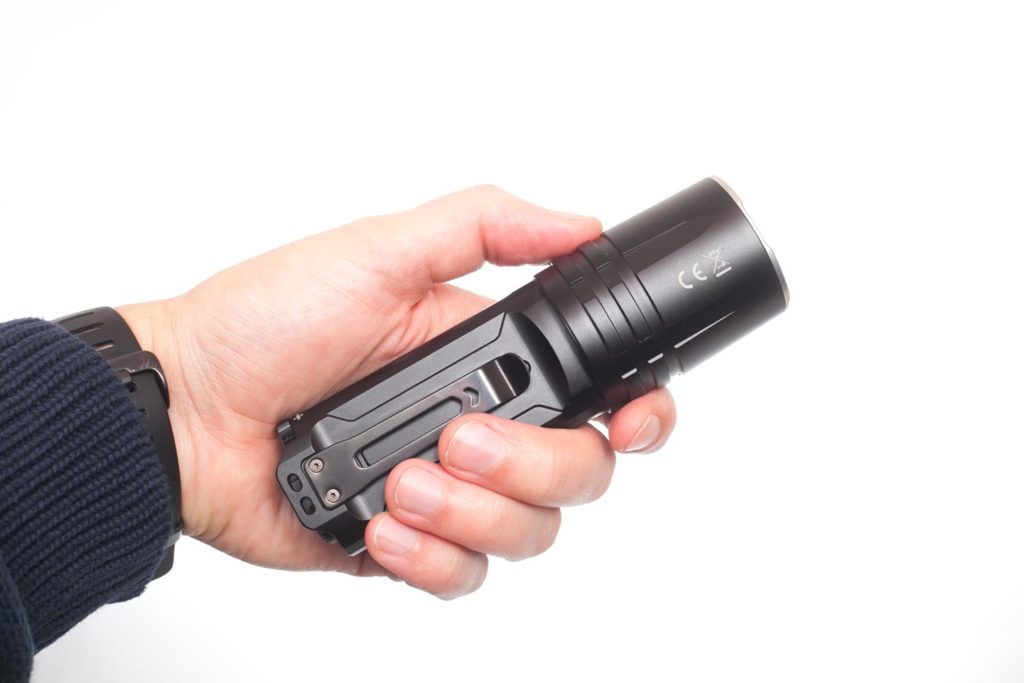
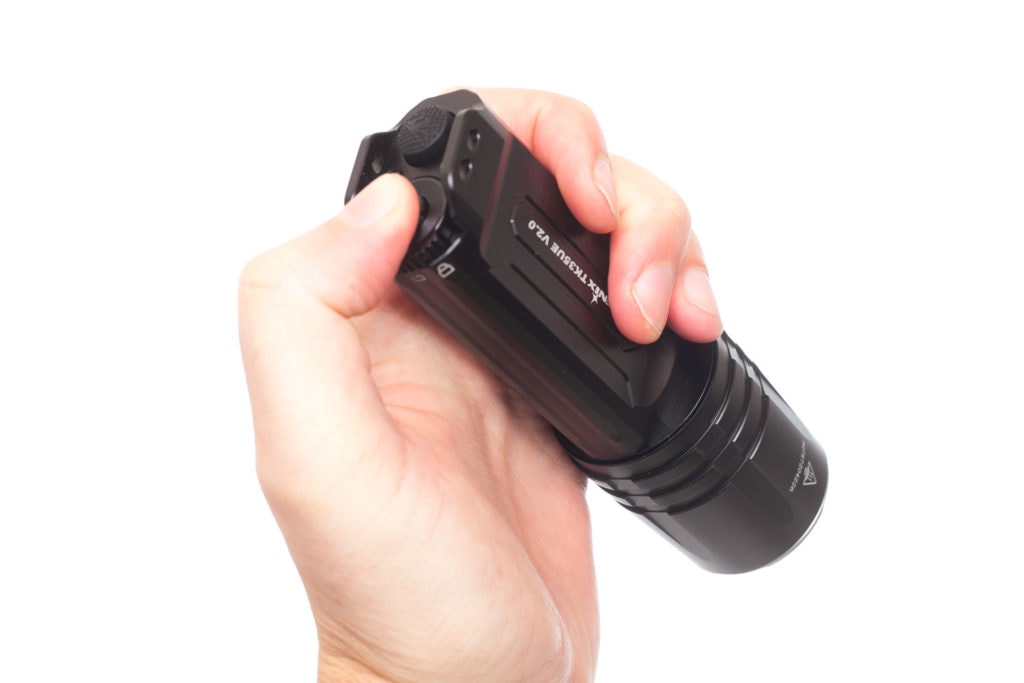
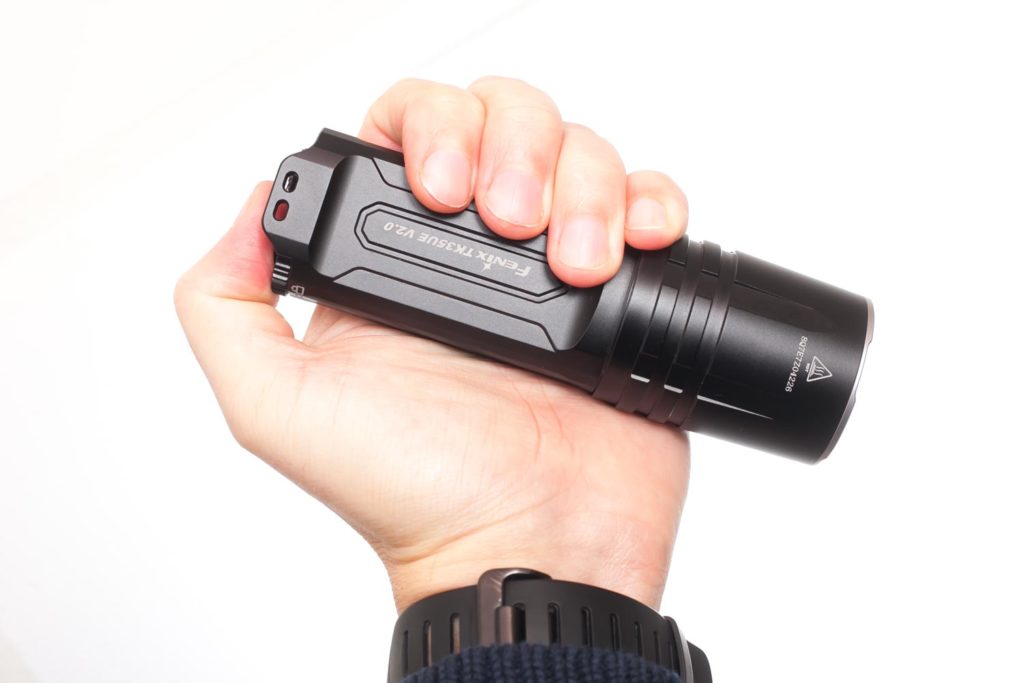
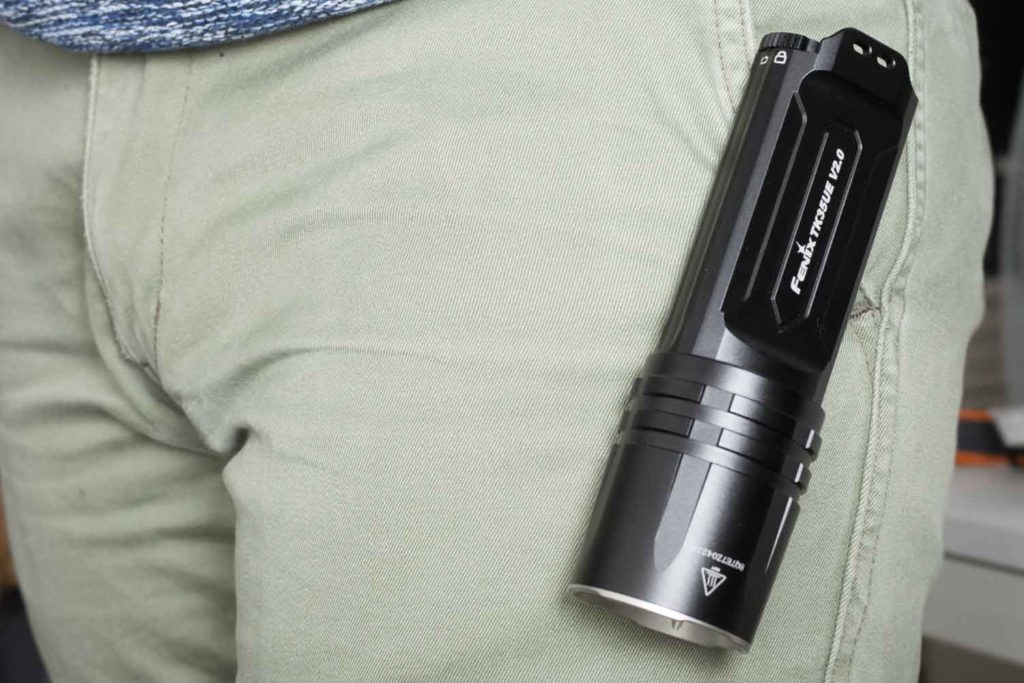
Build Quality, and Warranty
The TK35UE v2.0 is an aluminum flashlight with black anodization. The anodization is done pretty well, but mine had 1 little spot after attaching it to a large photography clamp. I’m not sure if it was there, or if the clamp damaged it. I expect the latter.
Earlier versions of this flashlight included several different LEDs and several ways of inserting the batteries. Most (if not all) of them included a separate battery carrier with space for 2*18650 batteries. The same carrier was used to charge the batteries. If you didn’t have a separate carrier, you’d have to wait before using the flashlight again or have some spare batteries at hand. The new TK35UE v2 doesn’t have this battery carrier anymore.
This edition has 2 slots in the body to fit 2*18650 batteries and has no charging ability. Fenix sells protected 18650 batteries with USB ports, so you don’t need a special charger for it. Note that those batteries are a little on the expensive side compared to unprotected, original batteries from LG, Sony, or Samsung.
Both the lanyard and pocket clip look good and are made of high-quality materials. The lanyard that they include is quite a bit thicker than your average one. Have a look at the pictures.
Fenix has a generous warranty, where they provide a lifetime warranty against any defect in material and workmanship. For all the details, I like to refer you to their website: https://www.fenixlighting.com/support/warranty-repairs/

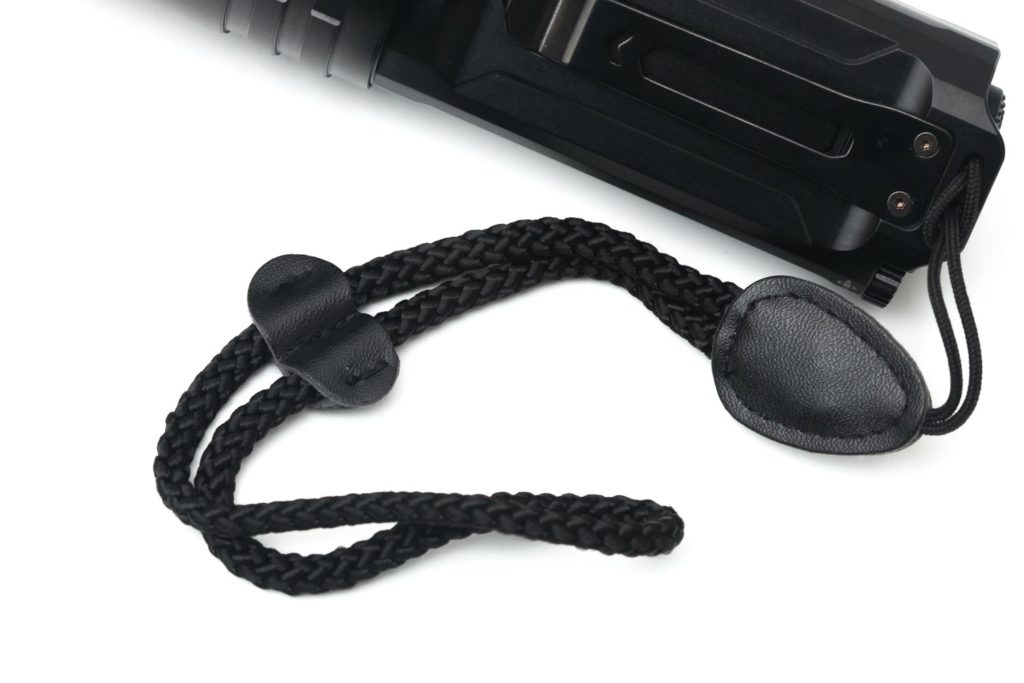
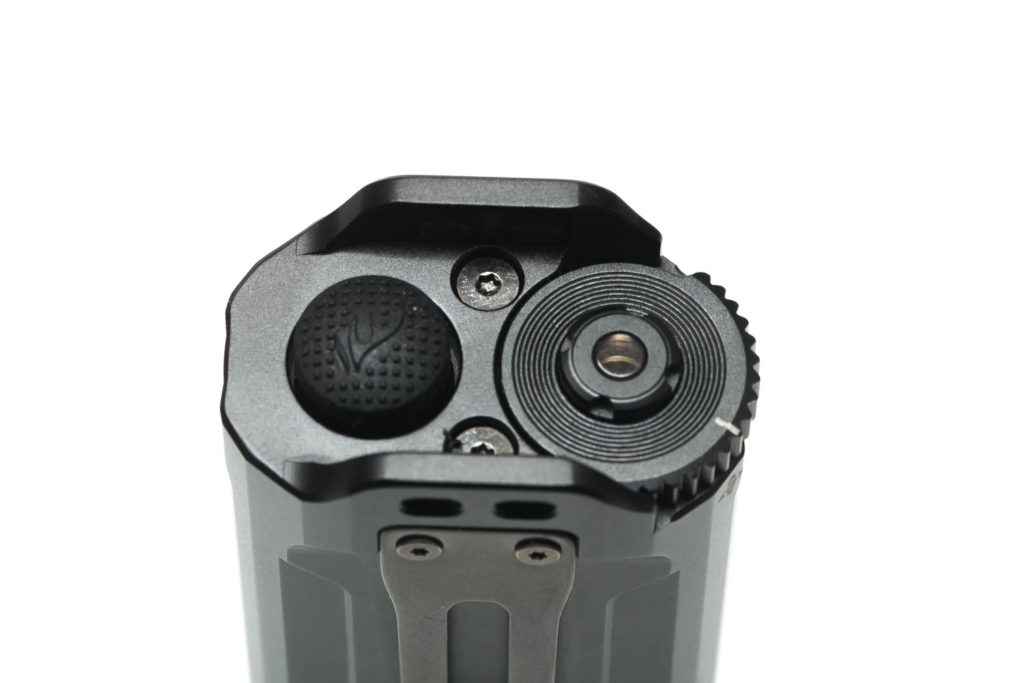
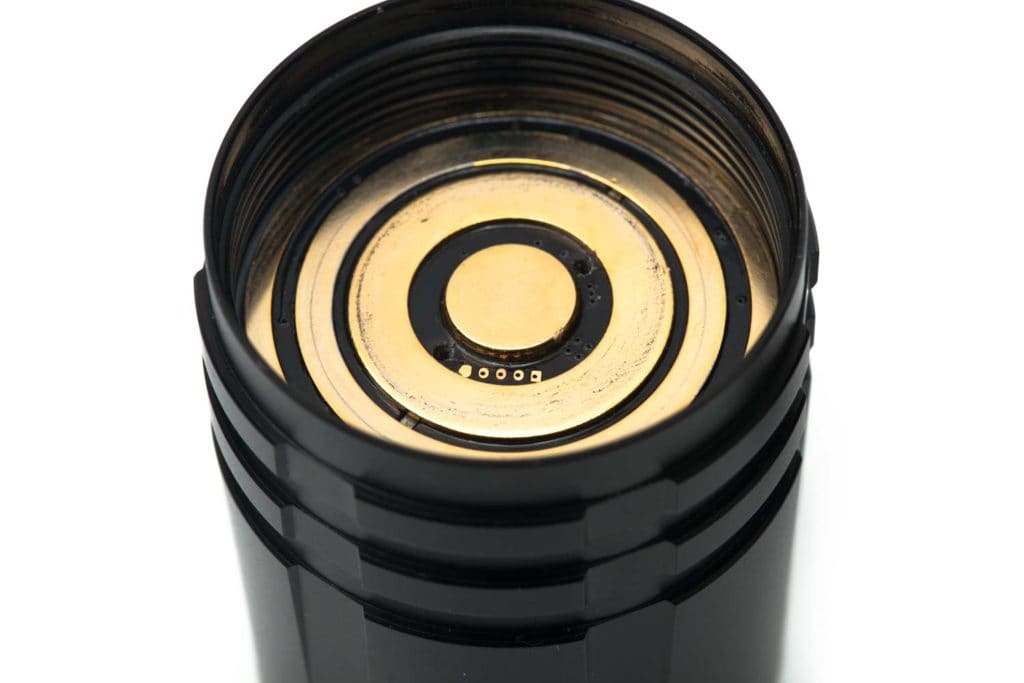
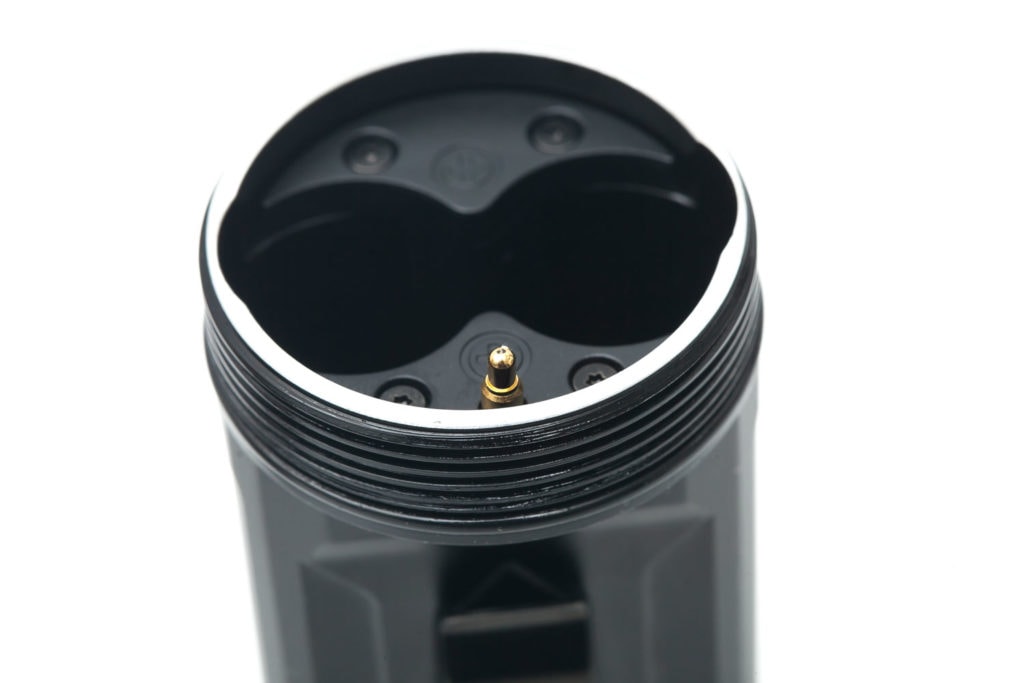
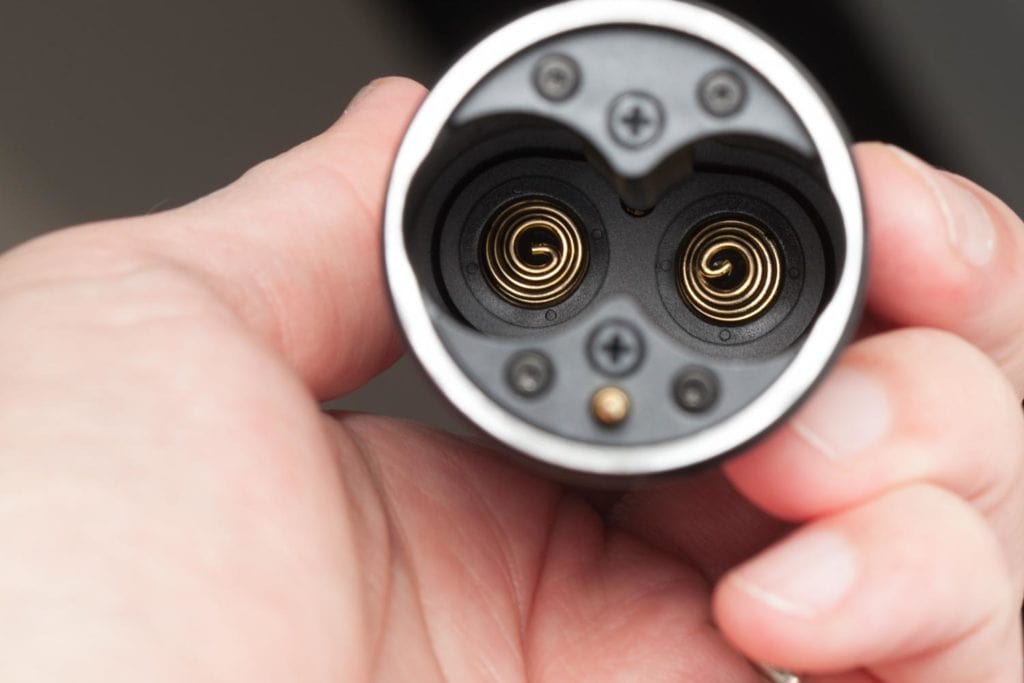
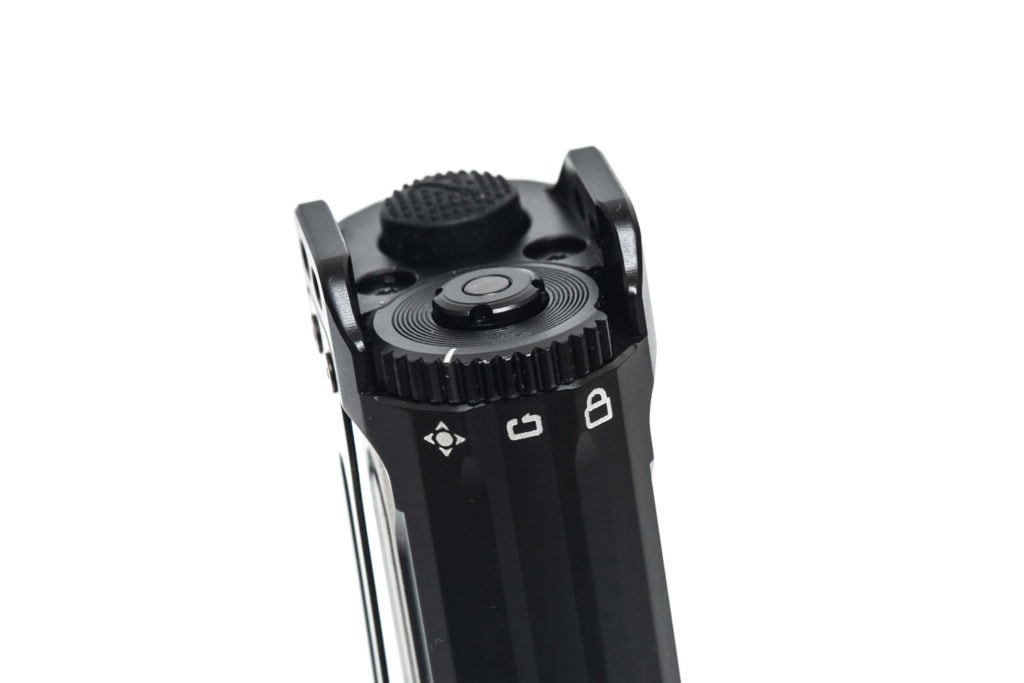
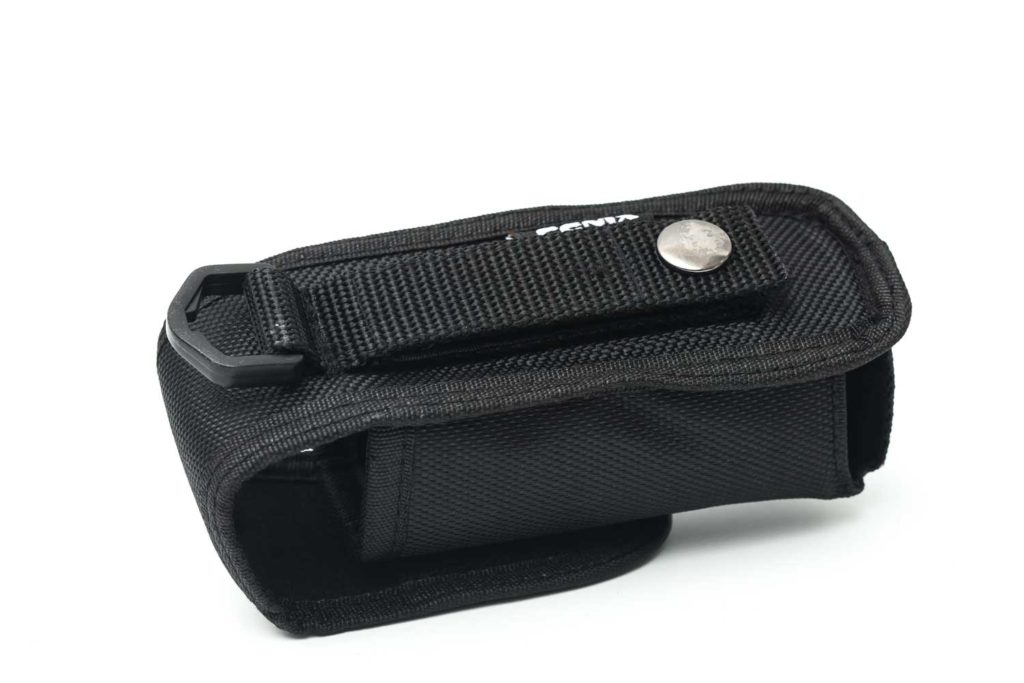
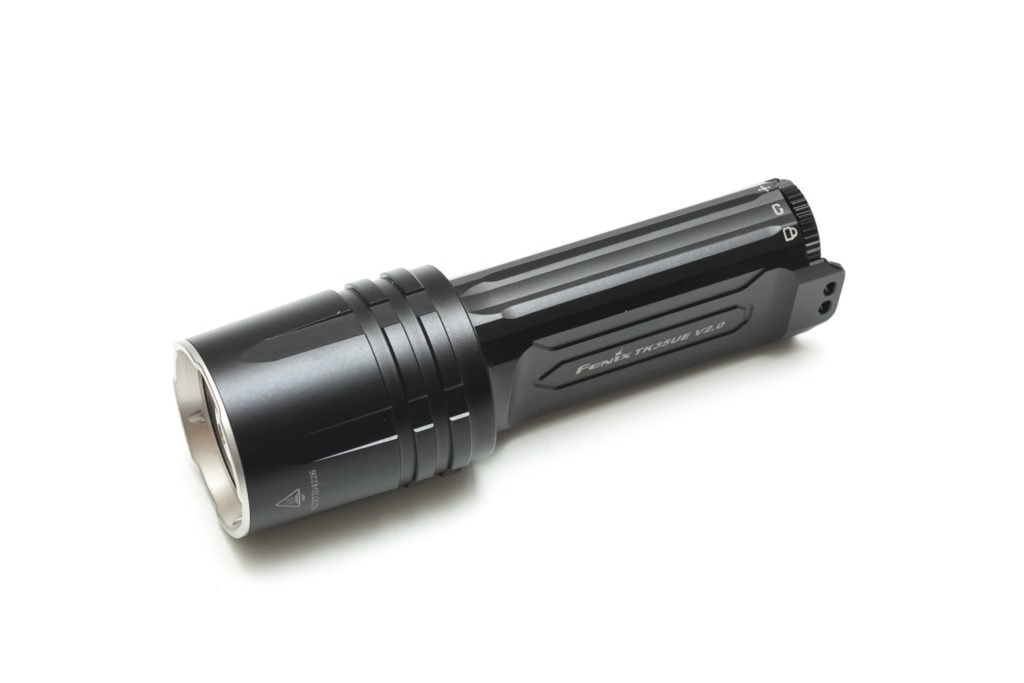
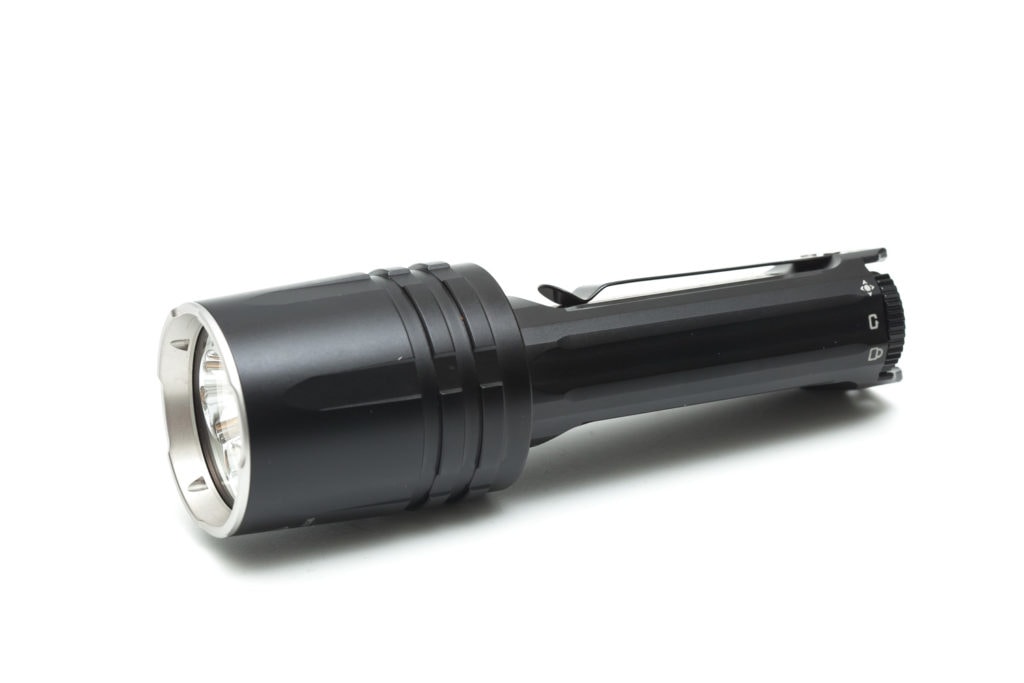
LED, Lens, Bezel, and Reflector
The ‘engine’ of the flashlight consists of a triple Luminus SST40 emitter, and Fenix claims an output of 5,000 lumens from those 3 emitters. If you do the math, that means almost 1350 lumens per emitter…
The 3 emitters are sitting in a smooth triple reflector protected by an ultra-clear glass lens. Fortunately, the bezel is made of stainless steel, which is much stronger than Aluminum, and also looks much better. If you drop the light onto the bezel, you’ll have less damage than with an aluminum one.
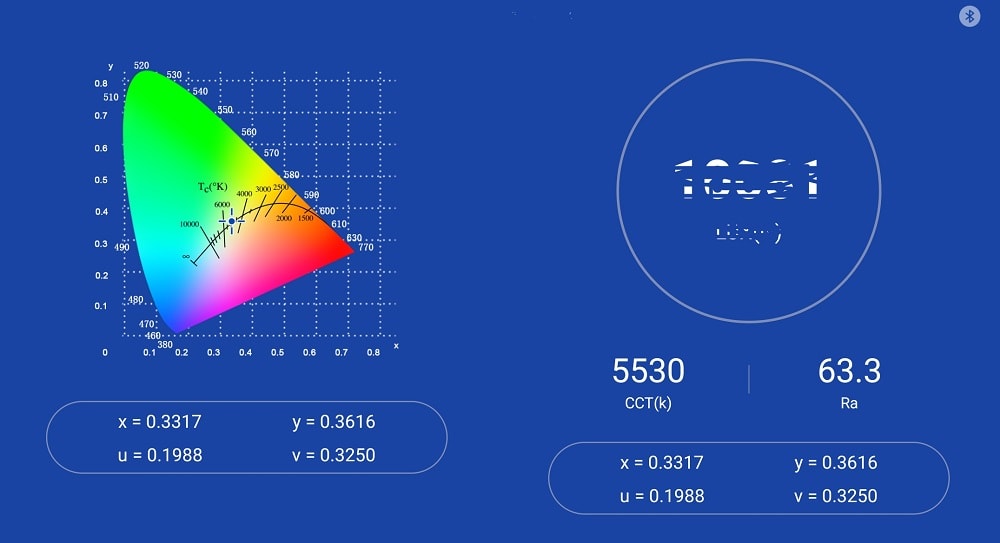
I used the Opple Light Master 3 (which is the same as the Opple light master pro) and got the following measurements. Keep in mind this is not a high-end spectrometer, but it give a good indication of the CRI and CCT (color temperature).
- CCT: 5530
- CRI (Ra): 63.3
CRI is pretty low at around 63, but and the CCT is relatively cool, but not too cool.
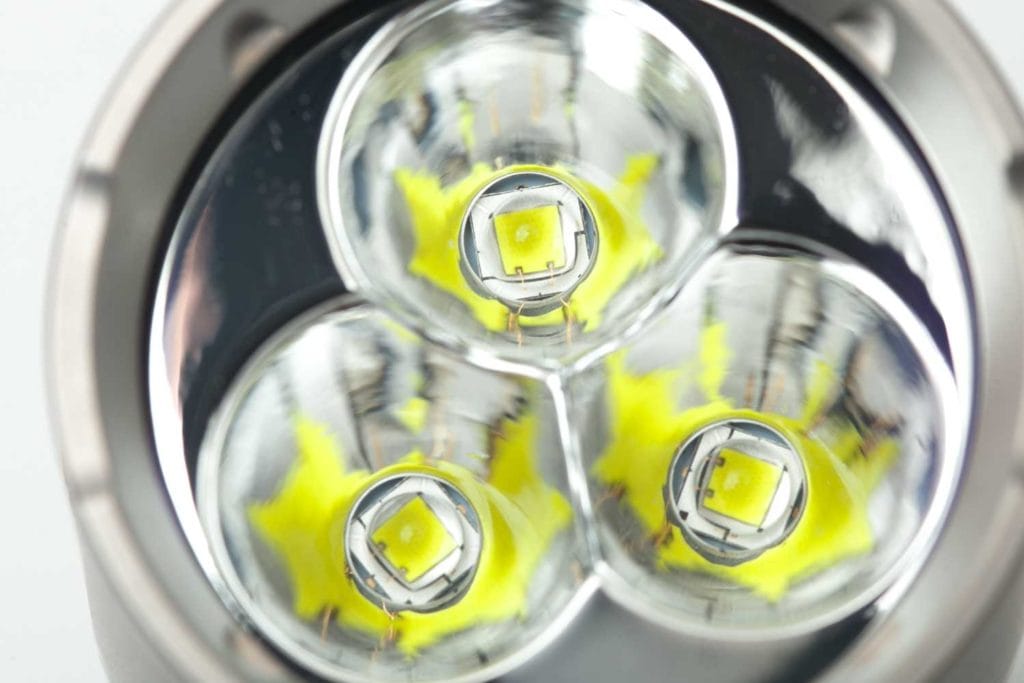

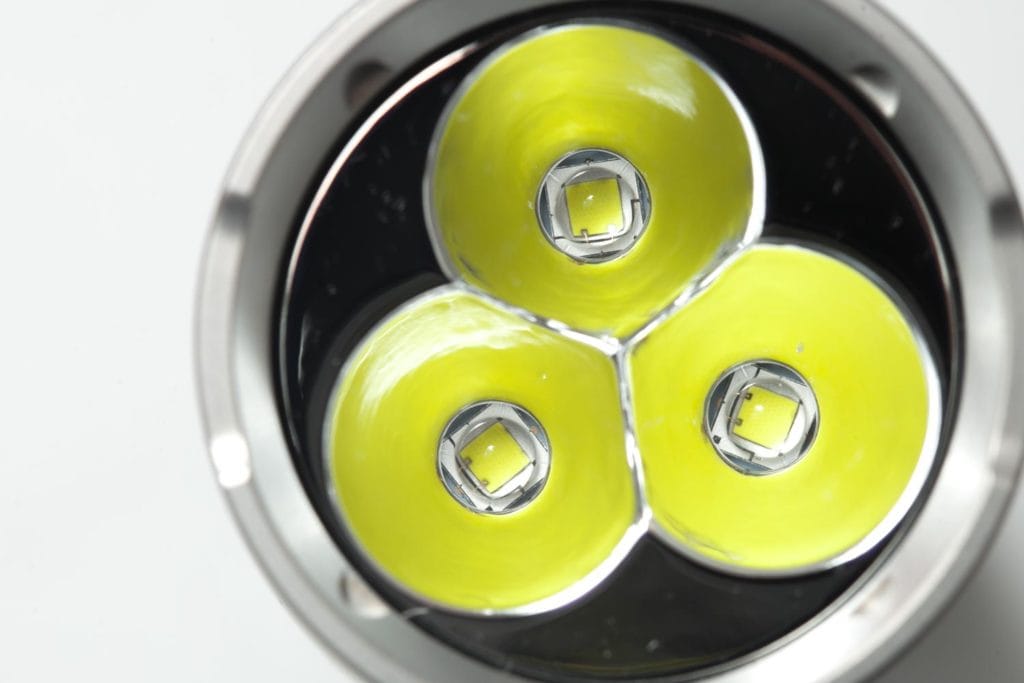
Dimensions and size comparison
- Length: 143 mm / 5.63 ”
- Head diameter: 43 mm / 1.69 ”
- Body diameter narrow: 21.94 mm / 0.86 ”
- Body diameter wide: 40.3mm /1.58″
Weight:
- Empty: 202.1 g / 7.13 oz
- With 2* 30Q batteries: 293.7 g / 10.36 oz
Fenix flashlight comparison
Size compared to other Fenix flashlights
Group 1:From left to right: Fenix TK30, Fenix PD35 Tac, Fenix TK35UE v2, Fenix TK11 Tac, Fenix PD36R, Fenix TK22 v2.
2nd group: Tactical flashlights: Olight Warrior M2R Pro, Thrunite TN12 v4, Fenix TK35UE v2, Fenix TK11 Tac, Fenix PD35 Tac, Fenix PD36R, Fenix TK22 v2.
Group 3: Fenix LR35R vs TK35UE v2

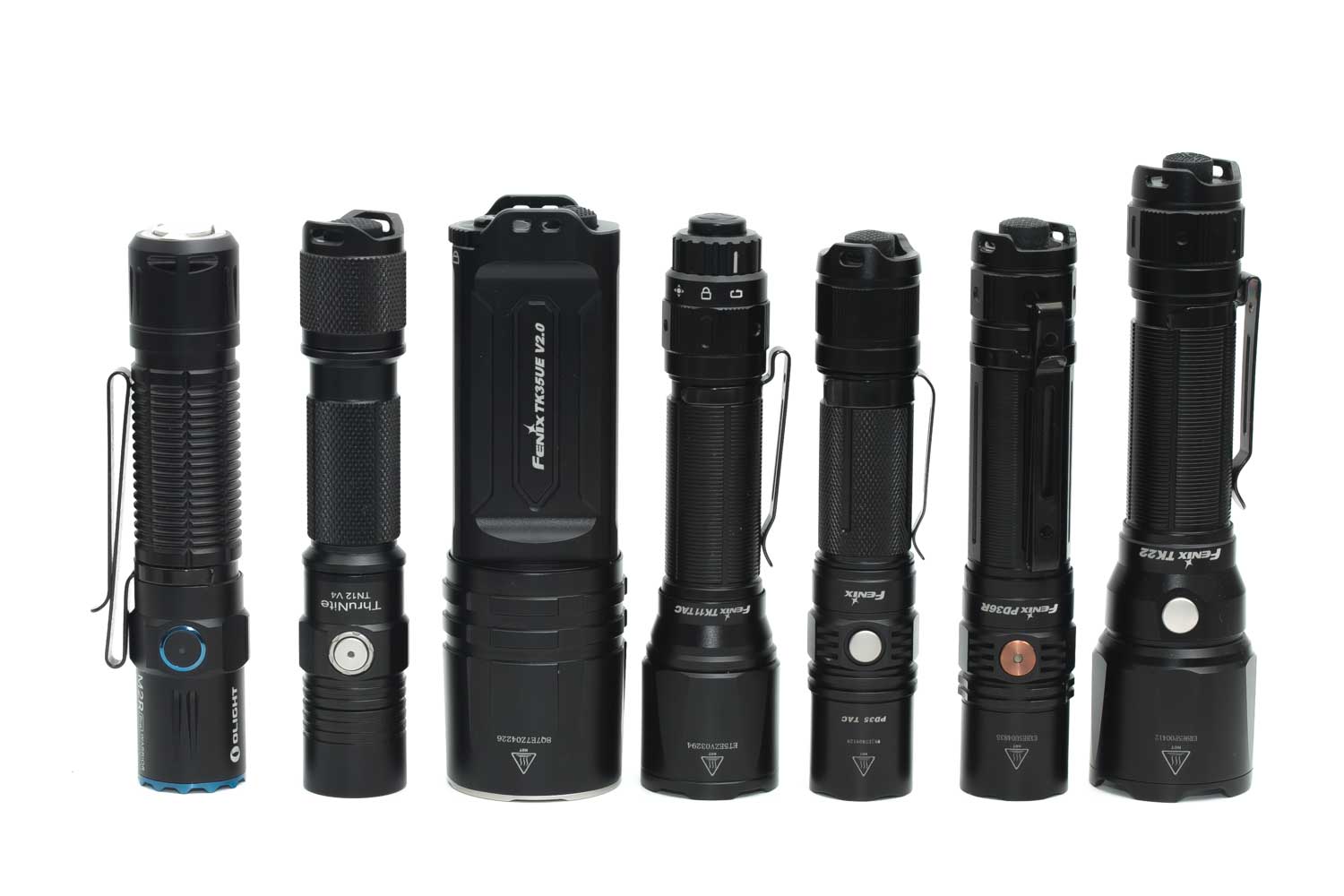
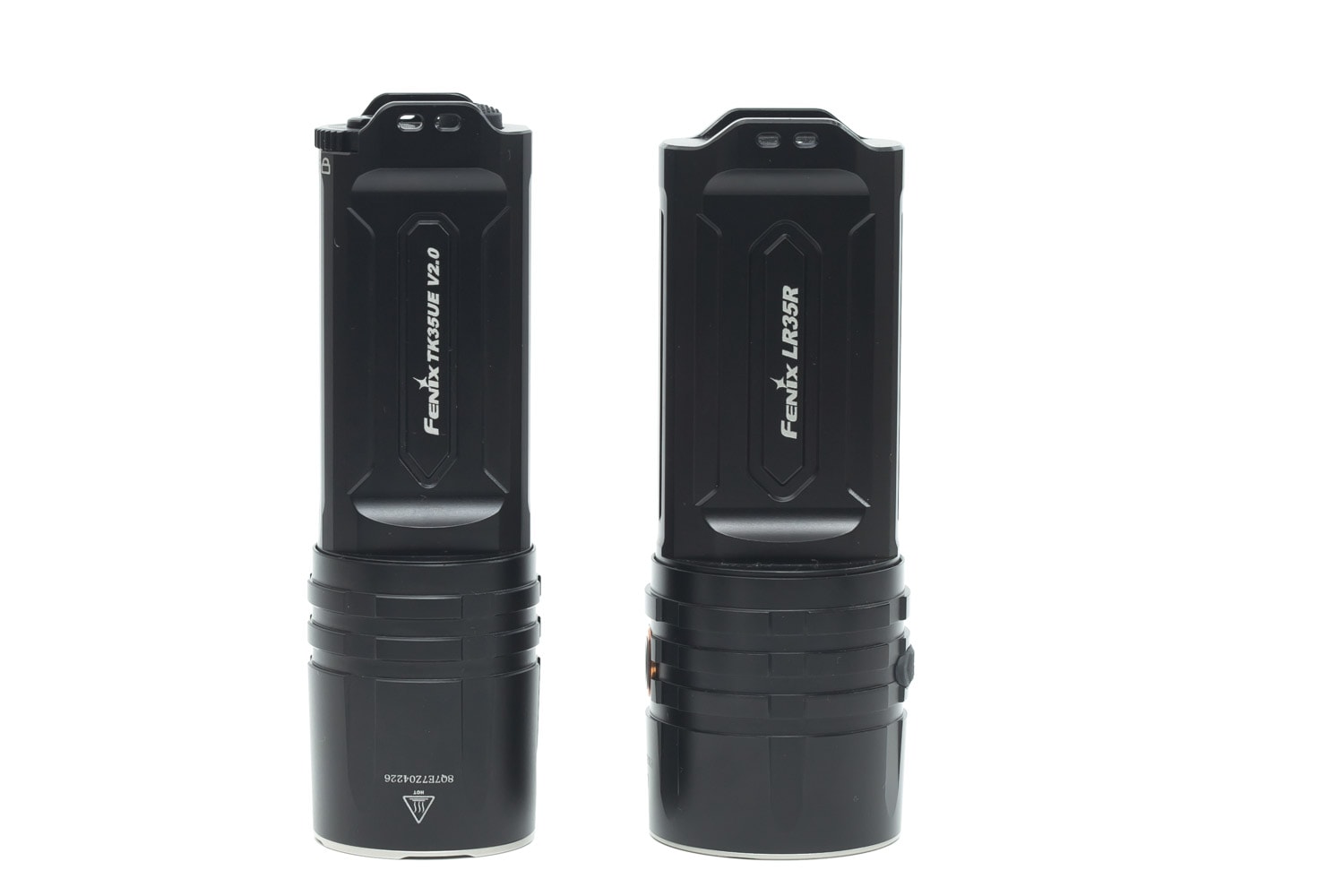
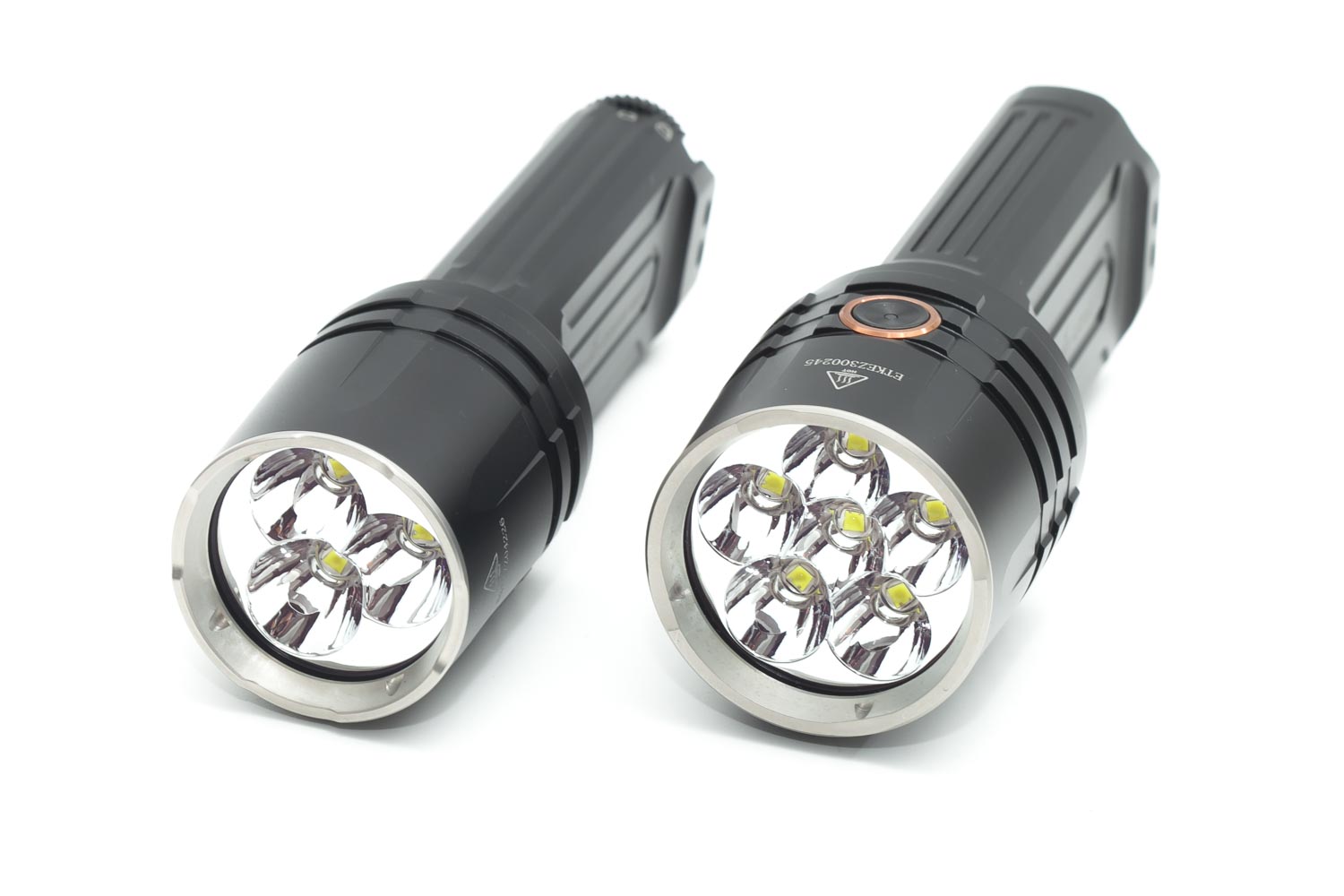
Driver & User Interface:
The TK35UE v2 has 2 button switches and 1 rotating switch. The rotating switch is to change between Lockout mode, Duty mode, and Tactical mode. The largest switch button is for power, and the smaller button with built-in indicator LED, is for modes and strobe. I also have to say that the manual is a little confusing with the following names: duty mode and tactical mode. For me, duty mode means normal modes, and tactical mode only strobe and turbo. And although I still think that is what it is supposed to mean, the manual seems to indicate the opposite.
(The manual states: in any state, rotate the toggle switch to select the needed mode, rotate the toggle switch to the left end to enter Tactical mode, rotate the toggle switch to the right end to enter Lockout mode, to the middle to enter Duty mode). My Tactical mode is the middle setting, and not the left.
The rotating switch has 3 options: from left to right according to the manual; Tactical mode, Duty mode, Lockout.
Unfortunately, during testing I found a problem that all 3 setting produced the same results. All settings had all the modes, even lockout. So I unscrewed the switch assembly, and cleaned the board (although nothing was particularly visible), and it worked again as it was supposed to.
Available modes:
- Duty mode: Eco, Low, Medium, High, Turbo (strobe is always accessible by a long-press)
- Tactical mode: Turbo, and Strobe
Main switch: largest button:
- Only for power on/off (and signaling because it’s a forward clicky switch)
Power switch: on/off
Mode Switch from OFF:
- Press and hold: Strobe
Mode switch from ON:
- Single-click: change modes
- Press and hold: strobe
Mode memory:
- Yes
Blinky modes menu:
- Strobe
Low battery warning:
- Red blinking LED inside the mode switch
Lock-out mode:
- Toggle the switch to the right
PWM:
- Not visible by eye
Batteries & Charging
My copy didn’t arrive with batteries, so I used button top, unprotected Samsung 30Q’s. Unfortunately, they are also just a tad short, so I used magnets. Unprotected, flat tops, aren’t recommended.
Fenix recommends using protected 3000mAh Fenix ARB-L18-3000P’s. I used the Samsung 30Q’s for testing instead because they have the same capacity.
The manual even states that you can use 2*CR123 (non-rechargeable) batteries in emergencies. I wonder why they didn’t mention 4* CR123 batteries. The voltage for 2*CR123 and 4*CR123 are the same because they are in parallel.
When the batteries run low, the Functional switch (the ones to change modes) will blink red. The flashlight will run for a couple more hours, so you’ll have enough time to replace the batteries.
It’s physically impossible to use flat heads.



Performance
Lumen measurements:
All output numbers are relative to my homemade Integrating Sphere. It is set up with an Extech SDL400 Lux Meter for measurements including a Kenko PRO1D ND-16 filter. The base measurement is done with a Convoy S2+ that has been tested at 255 lumens.
For Amp readings, I use a Fluke 77III DMM. For higher amps I now use a Fluke 325 True RMS clamp meter. For microamps, I use a cheap DMM with an easy-to-use micro amp setting.
All of my readings were taken from a fully-charged 2* Samsung 30Q .
| Mode | Specs | @ start | 30 sec | 10 min |
|---|---|---|---|---|
| Eco | 30 | 34.32 | 34.32 | – |
| Low | 350 | 382 | 382 | 380 |
| Med | 800 | 840 | 839 | 831 |
| High | 2000 | 2071 | 2059 | 1988 |
| Turbo | 5000 | 5224 lm | 4822 lm | 2632 lm |
| Turbo (tactical) | 3500 | 3557 | 3486 lm | – |
Runtime:
The runtime test was done with the 50cm integrating sphere, including the Kenko Pro1D ND-16 filter and Extech SDL400 data logging Lux Meter.
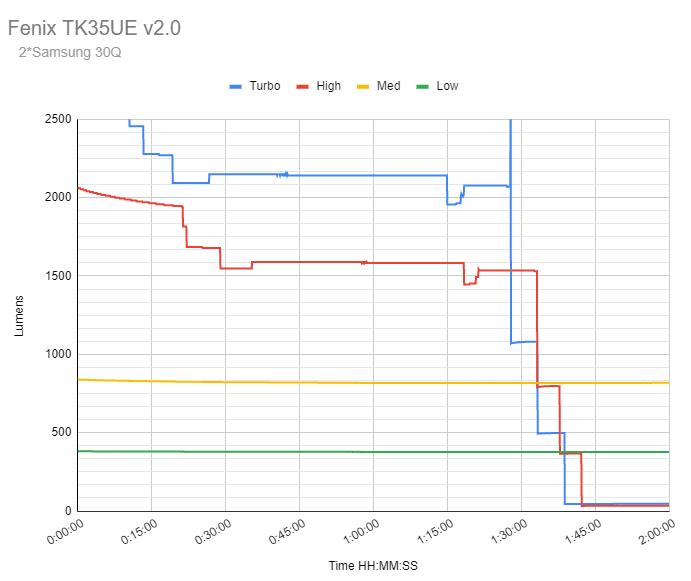

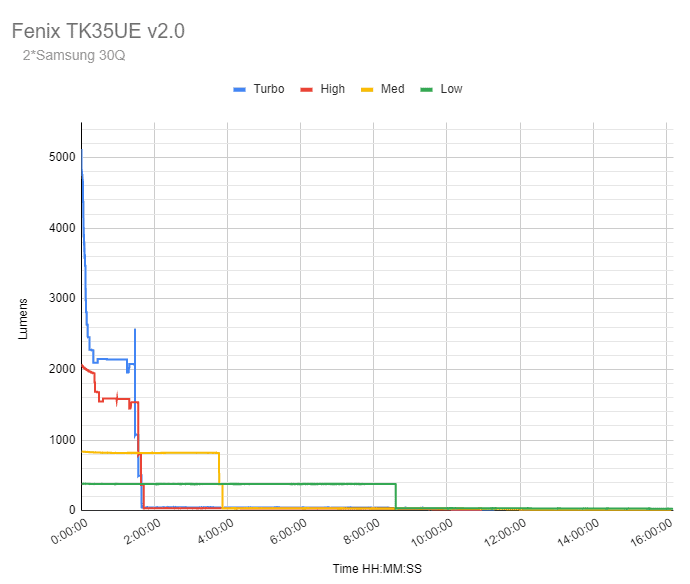
Turbo mode started above 5000 lumens and slowly dropped to about 2600 lumens in 9 minutes. It dropped a few more times till it was relatively stable at around 2140 lumens. The next major drops happened at around 1 hour 27 minutes. After several more drops it came down to roughly 45 lumens after 1 hour and 39 minutes. There is 1 strange spike in the blue line, just before the big drop. The battery indicator light started to blink, but the flashlight kept running for many more hours. After none of the runtime tests did the flashlight ever turn off. Each time the batteries were at about 2.5x V. Which is pretty low, so I suggest changing batteries when the red battery indicator led starts blinking. (Specs: 1 hour 40 minutes)
High started above 2000 lumens and the first real drop was after 20 minutes. The output then stabilized at around 1590 lumens. After 1 hour and 33 minutes, a large drop happened from 1530 lumens down to 797 lumens. 4 minutes later the next drop happened, and then again another drop. The last drop happened at around 1 hour 43 minutes from 375 lumens down to 35. It kept running at this output for many more hours. (Specs: 2 hours)
Medium mode was pretty stable from the time the flashlight was activated. It started at around 840 lumens and ran for 3 hours and 46 minutes before its first real output drop to roughly 380 lumens. At the 3hour-51minute mark, the light dropped to roughly 35 lumens, and ran for 12 more hours before I turned the light off. Batteries were around 2.52V. (Specs: 4 hours)
Low mode is the last mode I tested, and ran for 8 hours and 35 minutes at around 380 lumens. (Specs: 13 hours 40 minutes)
Throw Measurement
Measurements were taken outdoors at 10 meters with a professional Hagner E4-X Lux Meter (measured after 30 seconds).
| Mode | Specs | Candela measured | Meters | Yards |
|---|---|---|---|---|
| High | 15,200 cd | 16,700 cd | 258 | 283 |
| Turbo | 40,000 cd | 40,500 cd | 402 | 440 |
These numbers are pretty close to specs.
Beamshots
For the following beamshots I used a Canon EOS 5D Mk2 and a 50mm lens. manual settings: ISO1600, 1/4sec , F4, 5000K
The shed is about 65 meters / 71 yards away.
The reflective fence is about 200 meters away.


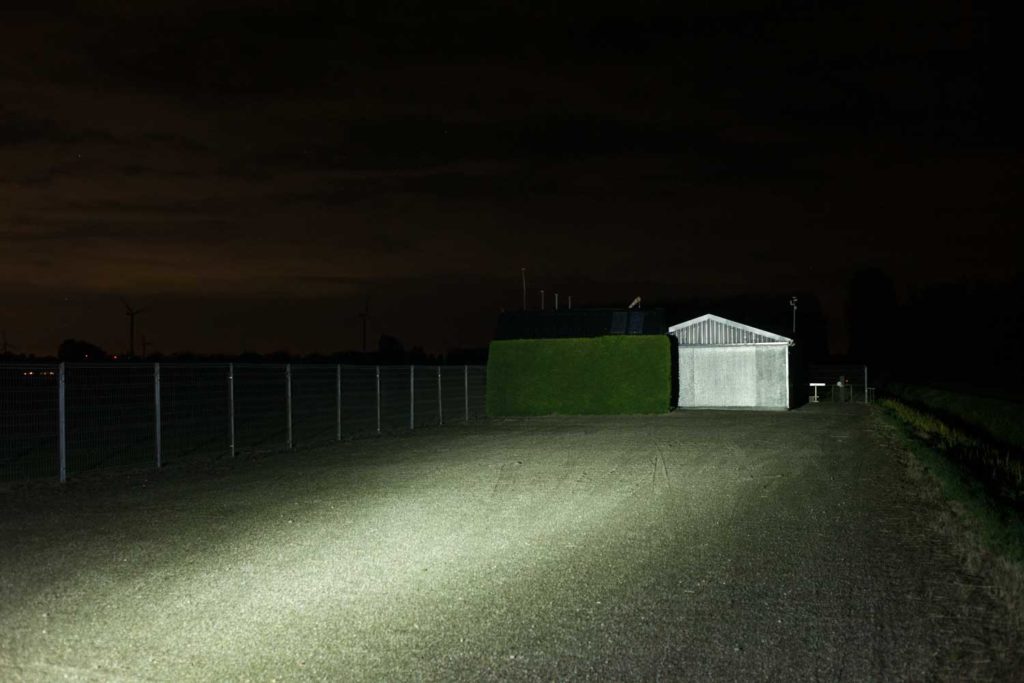
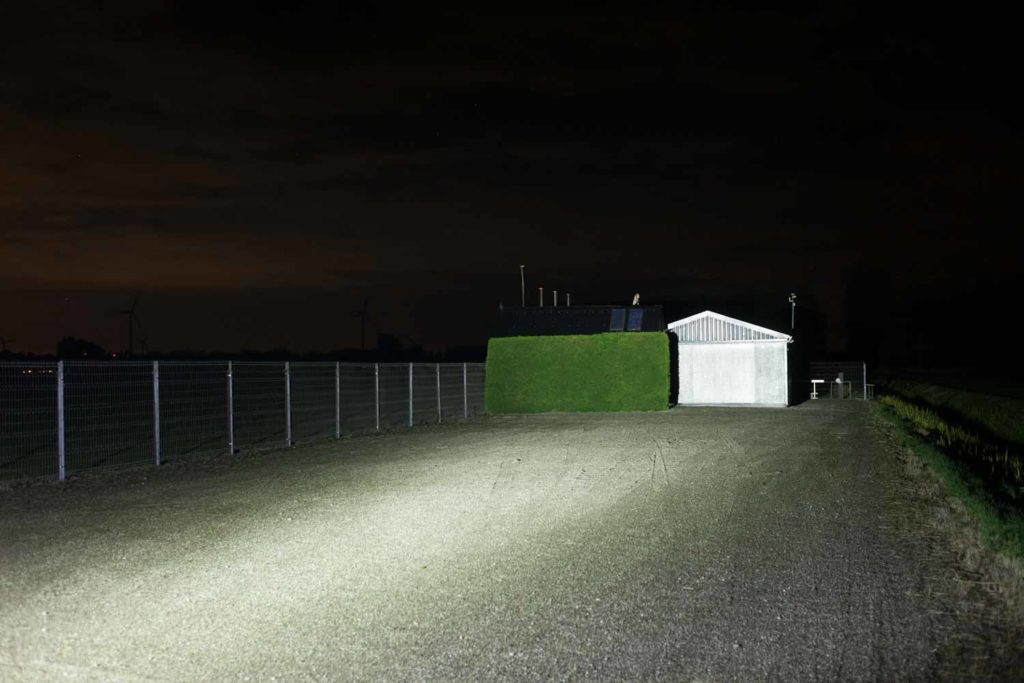

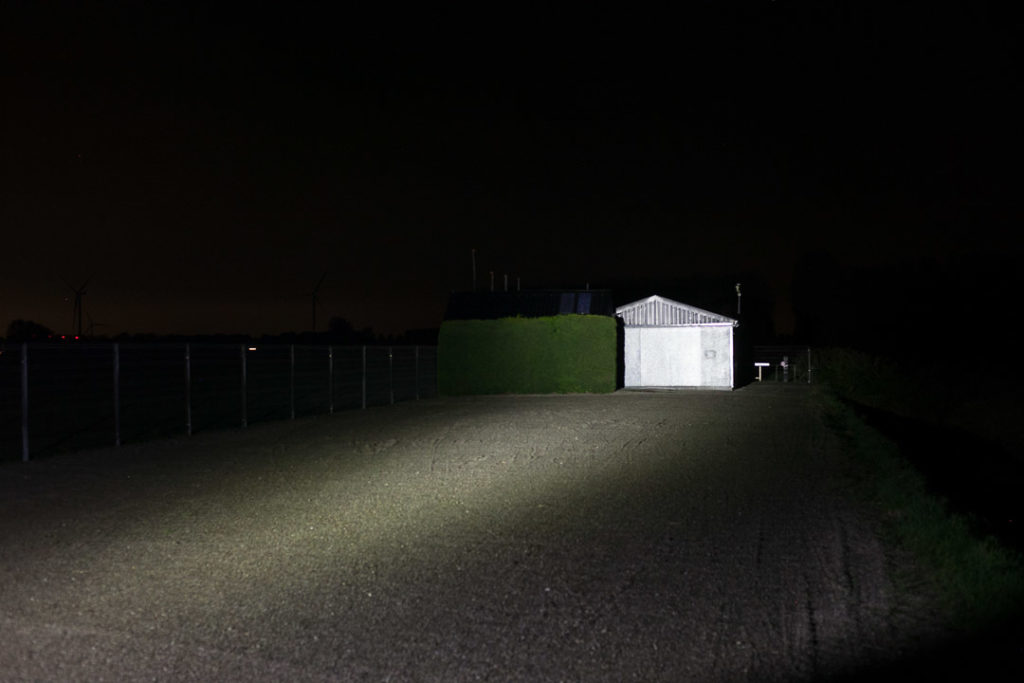
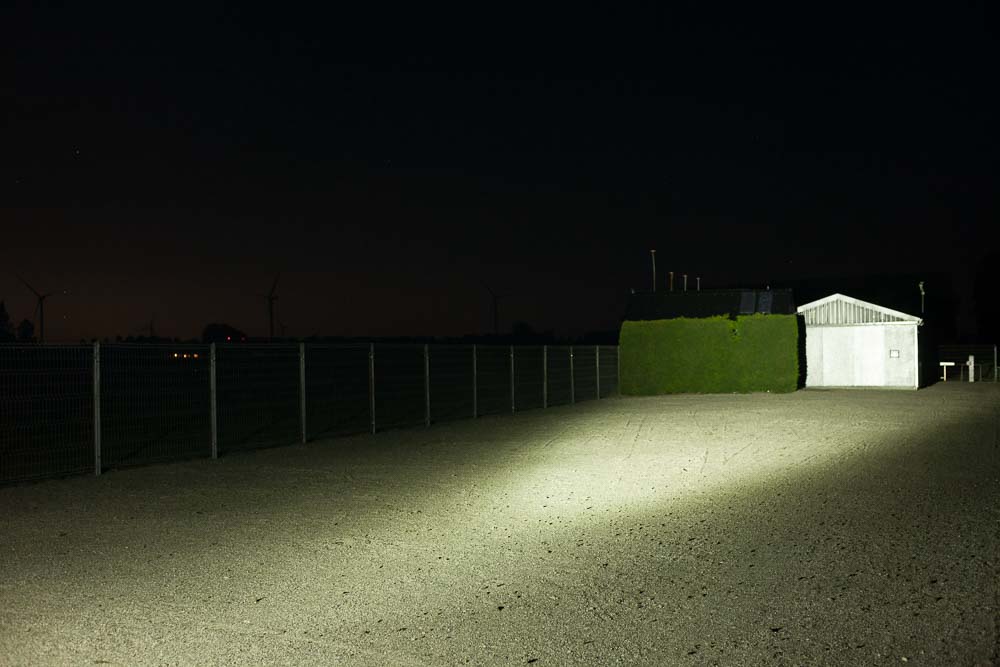
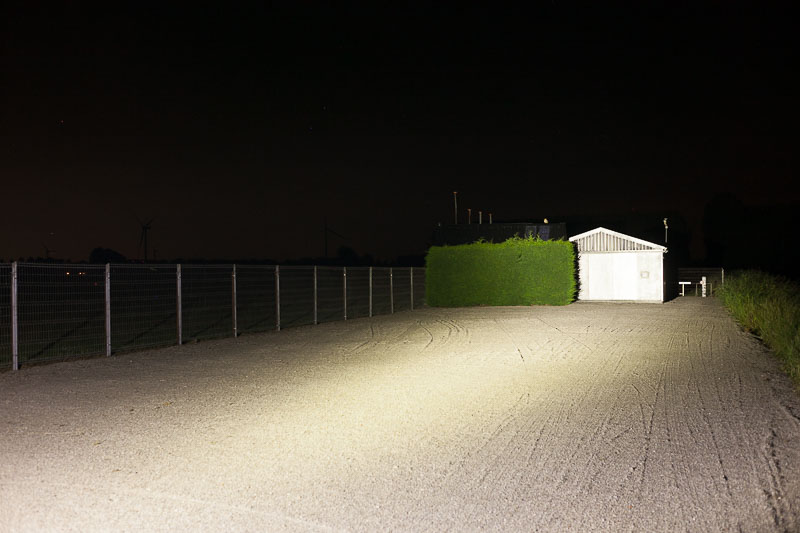




Disclaimer: This flashlight was sent to me for review at no cost by Fenix. I have not been paid to review, nor have I been holding back on problems or defects.
Final Verdict
Pros
- Feels good in hand
- Plenty bright and good runtimes
- No PWM
- SS bezel
- Easy switching between Duty, Tactical, and lockout mode
- Instant access to Turbo
- Instant access to Strobe
Cons
- No side switch? Not really a problem imho
- Manual little confusing about the 2 different modes
- Had an issue with the mode toggle switch, which was fixed after cleaning the driver/switch board.
Explanation on star ratings:
1: Avoid: my phone flashlight would be a better choice – 2: Poor: significant defect or issues, much better options available at the same price – 3: Average: some defects or issues – 4: Good: recommended (minor issues) – 5: Great: highly recommended

4 stars: ★★★★
It must have been more than 6 years ago, that I wanted to have an earlier version of the TK35, but never got one. Fast forward those years and finally have a TK35.
You have to get used to its design, but it feels actually nice in hand, and the output is pretty good as well as its runtime.
There’s 1 issue I ran into after a while. The toggle switch was not working as it was supposed to. After cleaning the board it worked like usual again. Therefore one less star.
Fenix TK35UE v2 discount code
Get 10% off every purchase at Fenix Lighting US, by using our exclusive 1lumen discount code: 1lumen10
1lumen selects and reviews products personally. We may earn affiliate commissions through our links, which help support our testing.